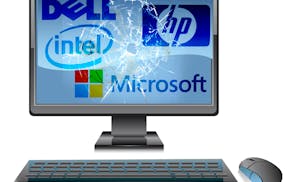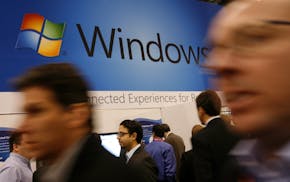Almost three years after the Minneapolis Wi-Fi network was given the go-ahead by the City Council, the public half of its promise is being fulfilled.
Nearly 14,000 consumers have signed up for broadband service at $18 to $30 a month, even though small patches of the city still lack adequate service, says network provider US Internet of Minnetonka.
But the other half of the network's promise, providing widespread wireless services to city departments from housing inspection to police, may take another three years.
That means Minneapolis will get about $50,000 worth of Wi-Fi network services this year, even though it pays $1.25 million annually to be the network's anchor tenant, said Lynn Willenbring, the city's chief information officer.
"But if we don't use all of the $1.25 million this year, it does carry forward to the next year," Willenbring said. (US Internet said the city can carry over its usage dollars for the full 10 years of the city-company contract.)
Slow network adoption by the city is partly related to spotty radio connections in some areas. Police and fire services won't switch from cellular connections to the wireless network until there are no dead spots, which might take until the end of this year, Willenbring said. For other city departments, it's a matter of changing operations to take advantage of the Wi-Fi network.
For police, the wireless network will provide additional bandwidth that will make it feasible for police cars to transmit live video, including police chases at up to 80 miles per hour, Willenbring said. One squad car camera will point out the windshield while the other is aimed at the back seat to record the behavior of people who have been arrested.
There is still inadequate coverage in as much as 3 square miles of the city's 59 square miles, but underserved areas are shrinking rapidly, said Joe Caldwell, US Internet sales vice president.
The dead spots in the network are the result of delays in obtaining permission to put Wi-Fi radios on city park land, plus some "challenge areas" where more or different types of antenna poles are needed, Willenbring said. To serve eastern Prospect Park, some antennae must be located in St. Paul.
Despite delays in completing the Wi-Fi network, some city field inspectors and work crews are using the wireless network already, Willenbring said.
"Building inspectors who previously had to come back to the office to write up inspection reports can now do it in the field, enter it into the computer system via the wireless network, print it out in the car and deliver the report on the spot," she said.
E-mail tech questions to steve.j.alexander@ gmail.com or write Tech Q&A, 425 Portland Av. S., Minneapolis, MN 55488-0002. Include name, city and phone number.

Alexander: A beeping computer is telling you what's gone wrong inside

Alexander: How to stop deleted iPhone e-mails from coming back

Alexander: Refurbished PCs may need a BIOS update to use new components

Alexander: Windows 11 not always to blame for browser or e-mail problems


